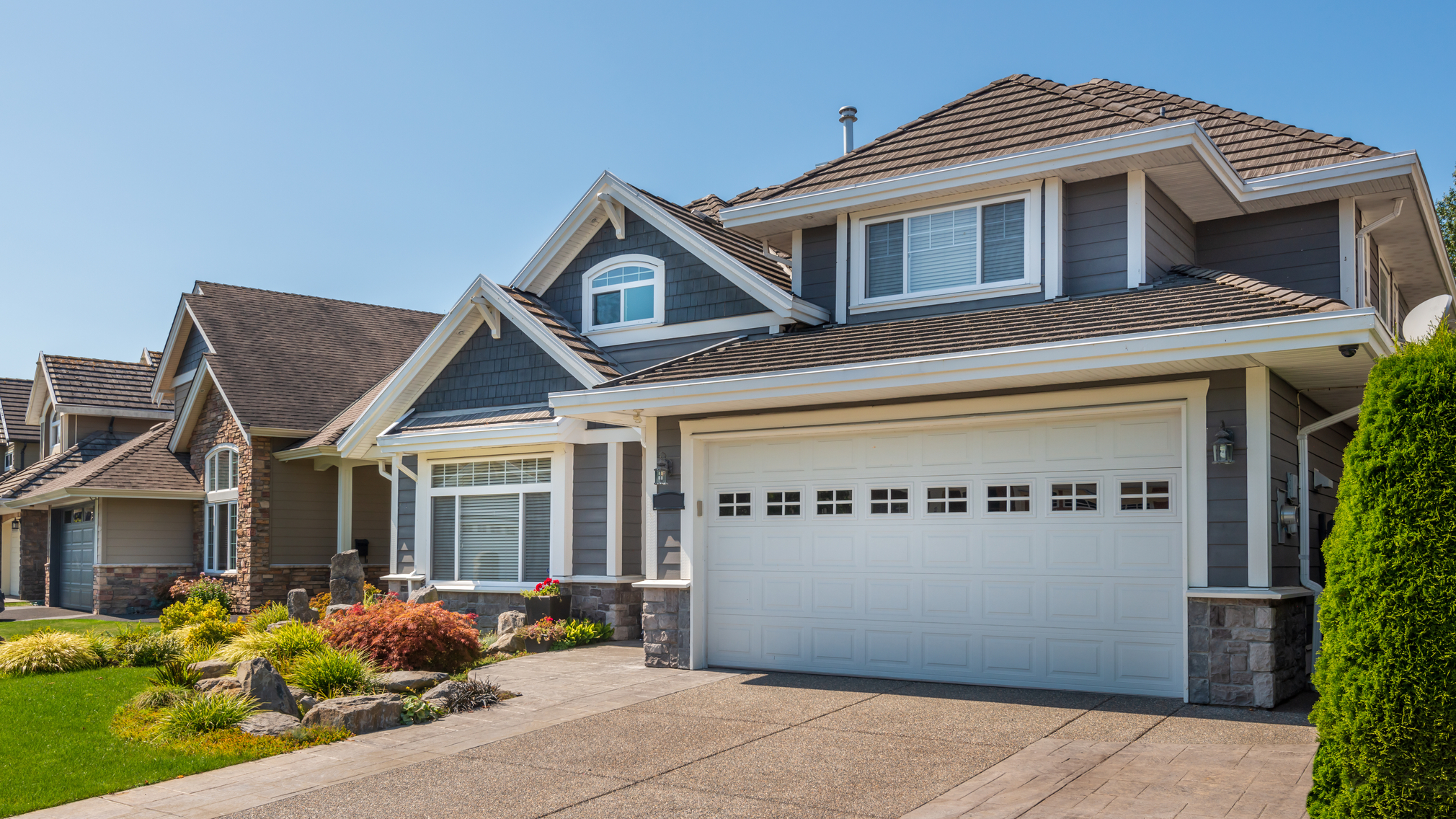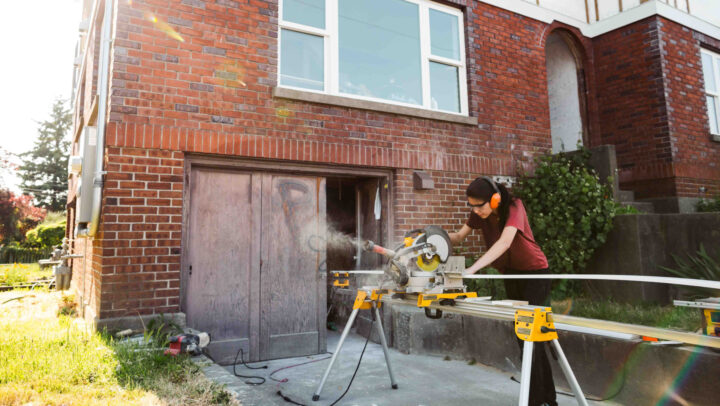How to Get a Mortgage


Written by Alycia Lucio on May 31, 2024
Getting a mortgage is all about preparation and knowing your options. A mortgage can be used to buy a home or borrow money against a home you already own. According to Zillow research, 78% of buyers used a mortgage to purchase a home and 50% of buyers are first-timers. With so many mortgage options and factors to consider, it can be tough to know where to even begin.
We’ll walk you through how to get a mortgage in 10 easy-to-follow steps with extra guidance on choosing the right mortgage option for you.
1. Strengthen your credit
You don’t need a perfect credit score to get a mortgage. Most lenders will qualify you for a home loan with a credit score of 620 as long as you’re willing and able to make a larger down payment and pay higher interest rates. To get the best mortgage offers, you’ll want to aim for credit scores of 720 and higher. A high credit score indicates good financial health, which can unlock lower interest rates and lower monthly payments.
Here are ways to work on your credit before starting your mortgage application:
- Review your free credit report to check for any errors or signs your score is being impacted negatively
- Make all debt payments on time
- Reduce credit card balances as much as possible
- Work to bring past-due accounts current
- Avoid applying for new credit cards, personal loans or taking on any additional debts
2. Build up your savings
In addition to building your credit, you’ll want to build up your savings as much as possible. Savings will help you cover the costs of owning a home and your down payment. Most first-time homebuyers can get a mortgage with as little as 3% down, but you can expect to pay between 6% and 8% of the purchase price in down payment and closing costs. A 20% down payment can unlock better mortgage rates, help avoid mortgage insurance, and reduce the amount your financing to lower your monthly payments.
3. Figure out your housing budget
One of the most important things you can do before applying for a mortgage is to set yourself up with a realistic budget. You want to ensure that you’re financially ready for long-term homeownership, which means addressing your overall financial health.
The best way to determine what type of house you can afford and whether you can afford it right now is by assessing your current financial situation, in addition to your future mortgage costs. Think about:
- Your current annual salary
- Your savings
- Your minimum monthly debts
- Your down payment goals
- Your ideal mortgage payment
Learn more about your budget for buying a house with Zillow Home Loan's BuyAbility tool.
4. Choose a mortgage type and repayment term
Before narrowing down your list of lenders, it’s essential to learn about the mortgage loan options available and how they work. This will help you determine what works best for your financial situation. When choosing a mortgage, you’ll have to consider the type of loan, the type of rate and the loan terms.
Here’s an overview of the mortgage options available:
What are your mortgage options?
Conventional loans: These are mortgage loans backed by Fannie Mae and Freddie Mac. Conventional loans are popular among borrowers with solid credit scores of 620 or higher and low DTI ratios.
FHA loans: Federal Housing Administration loans typically have more lenient eligibility requirements compared to conventional loans, making them popular among homebuyers who have lower credit scores or a higher percentage of debts to income.
VA loans: VA loans are partially guaranteed by the US Department of Veterans Affairs. They’re available to active-duty service members, veterans and eligible surviving spouses. VA loans don’t require a down payment; however, they’re only available through VA-approved lenders for eligible service members.
USDA loans: Also known as rural development loans, USDA loans are backed by the US Department of Agriculture. They are designed to help people with low to moderate incomes to purchase, build, repair, or renovate homes in rural areas.
Jumbo loans: These are designed for high-cost properties, since they exceed the typical loan limits set by the Federal Housing Finance Agency (FHFA). Because of the higher loan amounts, jumbo loans bring increased risk for lenders, which means stricter qualification requirements.
What is the difference between a fixed and adjustable rate?
Most mortgage loans offer the option of fixed or adjustable interest rates. Fixed-rate mortgages maintain the same interest rate for the life of the loan, whereas adjustable-rate mortgages (ARMs) offer low introductory interest rates that typically fluctuate with the market.
What is a mortgage repayment term?
A mortgage loan term refers to the length of time you have to repay the debt. The most common repayment term is the 30-year mortgage. Most lenders also offer shorter repayment terms, like 10- and 15-year mortgages and some also offer 20- and 25-year terms.
With shorter mortgage repayment terms, you can expect higher monthly payments and less interest. Longer repayment terms offer lower monthly payments, but you’ll pay more interest over the life of the loan.
5. Research multiple lenders
There are many types of mortgage lenders to choose from. However, their loan product offerings and mortgage requirements will vary depending on the loan servicer within their network. The key is to shop around and find a mortgage lender that can meet your financial needs.
Get a mortgage with us at Zillow Home Loans.
Start by asking for mortgage lender referrals from your buyer’s agent, friends and family. If you have an existing relationship with a bank or credit union, check with them to see what home loan products, rates, and terms they can offer you. Compare both the rates and fees charged by each lender before making your selection.
6. Apply for mortgage pre-approval
Once you find a lender, the next step is to get pre-approved. The mortgage pre-approval process can usually be completed the same day you apply, depending on the mortgage lender and how quickly you submit required information to them. Be prepared to provide items, such as pay stubs, bank statements and W2s, or tax returns if self-employed.
While a mortgage pre-approval isn’t mandatory, it is advantageous for serious buyers. It lets the seller know you have the means to make a genuine offer and will likely follow through with closing on the home. Not ready to get pre-approved, but curious how much you pre-qualify to borrow? You can check your loan eligibility with us at Zillow Home Loans* in as little as five minutes.
7. Shop for a home
Once you’re pre-approved for a mortgage, you can start searching for a property that suits your needs. While a mortgage pre-approval letter states an amount you are conditionally approved for, final loan approval is contingent (among other things) on your mortgage lender confirming and evaluating the property's overall value through an independent appraisal, and performing title due diligence to confirm title on the home is clear before giving their final approval. The appraisal also allows the mortgage lender to calculate your loan-to-value ratio (LTV), while the title search ensures there are no liens, judgments or claims on the home.
8. Submit your home loan application
Once your offer is accepted on a home, you’re ready to apply for a mortgage. Getting approved for a mortgage typically takes between 30 to 45 days. Lenders will work to meet the closing date in your purchase contract. This time includes the time it will take to have the home appraised and confirm the title. When you apply for a mortgage, your lender will require your most recent financial information, including:
- Pay stubs
- Bank statements
- Proof of identification, such as your driver’s license and social security number
- W-2 forms and tax returns from the last two years
- Proof of income from other sources, including gift funds and large deposits
Be sure to speak with your lender before submitting your mortgage loan application to ensure you provide all the necessary information.
9. Review your closing disclosure
Once you submit your mortgage application, the underwriter will look at everything one final time to verify that you still qualify for the mortgage loan terms and amount. If you do, your lender will send you a Closing Disclosure, which is a document that outlines the terms of your mortgage loan, interest rates, and any fees.
Law requires all mortgage lenders to give you a Closing Disclosure within three days of your closing date. This ensures you have enough time to verify that the statement aligns with your initial Loan Estimate and agree to any changes.
10. Get mortgage approval and close on your new home
Closing on a home involves securing a mortgage, paying closing costs and signing a variety of documents and disclosures, including the closing disclosure.
Standard fees you can expect to pay at closing include:
- The underwriting fee, also known as the origination fee or loan processing fee
- Title insurance fees
- The appraisal fee
- An attorney fee, if you are in an attorney closing state
- Recording fees
- A credit check fee
- Upfront expenses, such as the down payment, prorated property taxes, homeowners insurance, etc.
How long does it take to get a mortgage?
Getting a mortgage loan takes an average of 30 to 60 days. While the mortgage pre-approval process can usually be completed in a day, the application process can take longer depending on the following:
- The accuracy of your financial information
- The amount of time it takes you to submit your documentation
- The time it takes to schedule the appraisal and conduct a title search
- Inspection issues
- Any changes to your credit report or employment during the underwriting process
All of the above steps are integral parts of the mortgage process. Understanding what types of home loans are available to you, how to find them, and what you have to contribute to the process, can help you feel more prepared when applying for a mortgage. Zillow Home Loans* is here to help. You can contact our loan officers anytime to get your questions answered.
*An equal housing lender. NMLS #10287
How much home can you afford?
At Zillow Home Loans, we can pre-qualify you in as little as 5 minutes, with no impact to your credit score.
Zillow Home Loans, NMLS # 10287. Equal Housing Lender
Get pre-qualifiedHow much home can you afford?
See what's in reach with low down payment options, no hidden fees and step-by-step guidance from us at
Zillow Home Loans.
Zillow Home Loans, NMLS # 10287. Equal Housing Lender
Calculate your BuyAbility℠



